Barstow Street
Introduction
Text-to-speech Audio
Images
South Barstow from Grand Ave. looking north (1884)
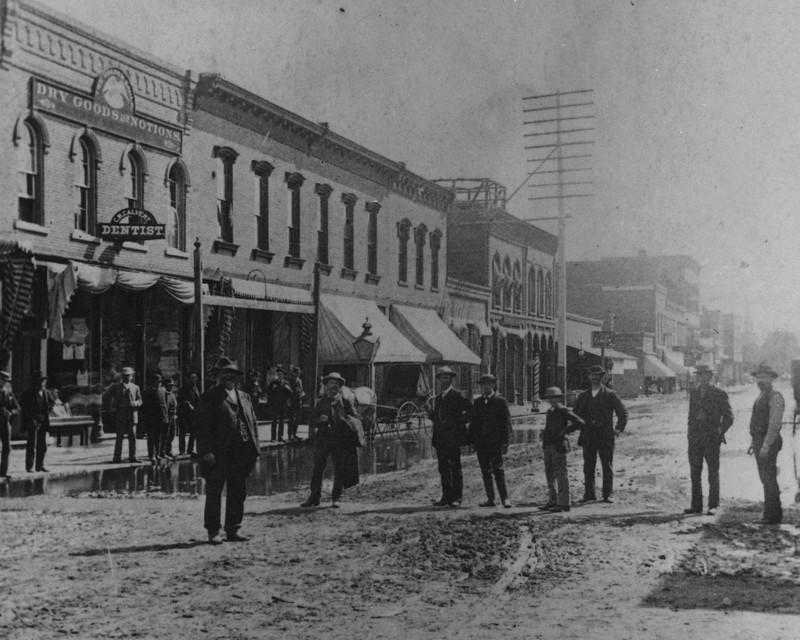
Barstow Street Bridge (ca. 1895-1905)
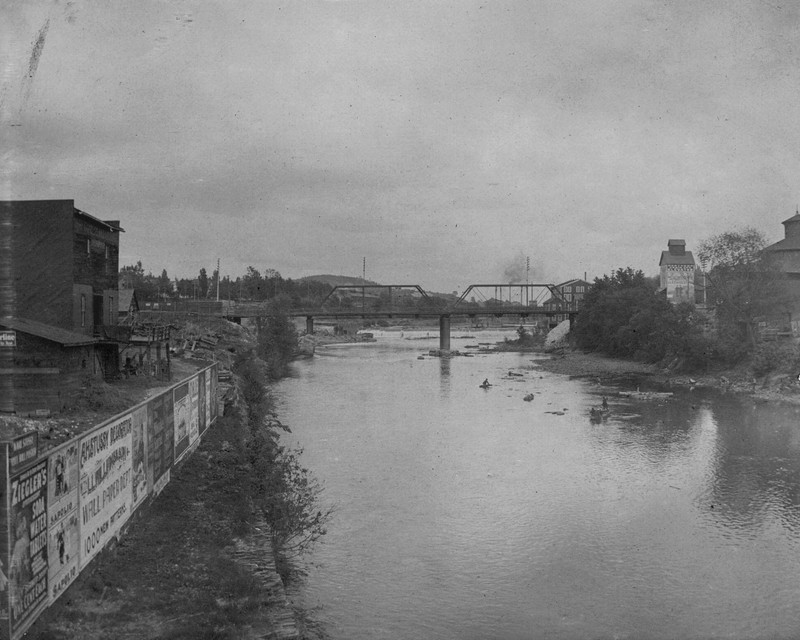
Barstow Street Bridge (ca. 1905-1920)
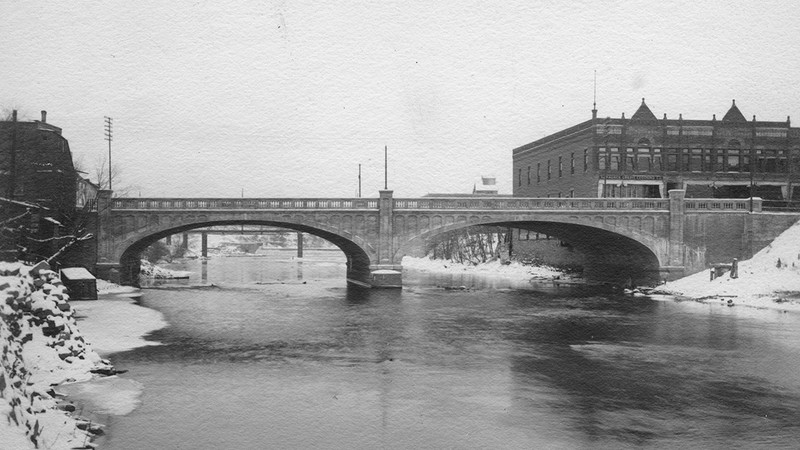
South Barstow Street looking south; turret of Drummond-Laycock building visible at the intersection of Eau Claire Street (1911).
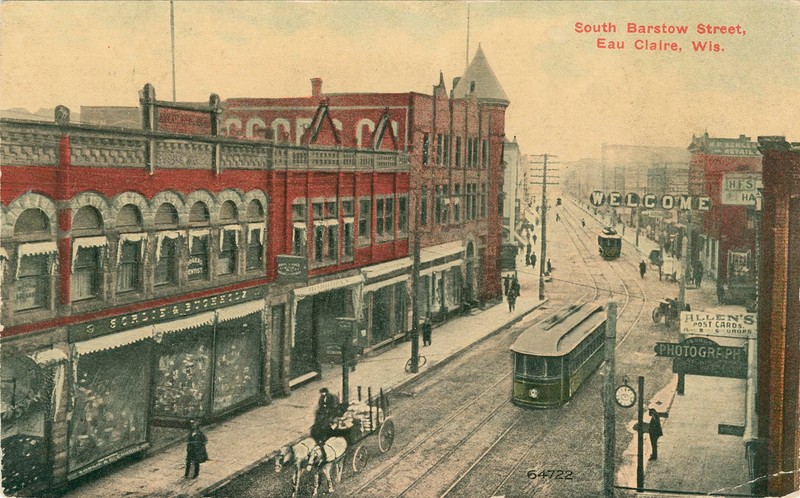
Armistice Day parade on Barstow Street; Masonic Temple at far right (1918).
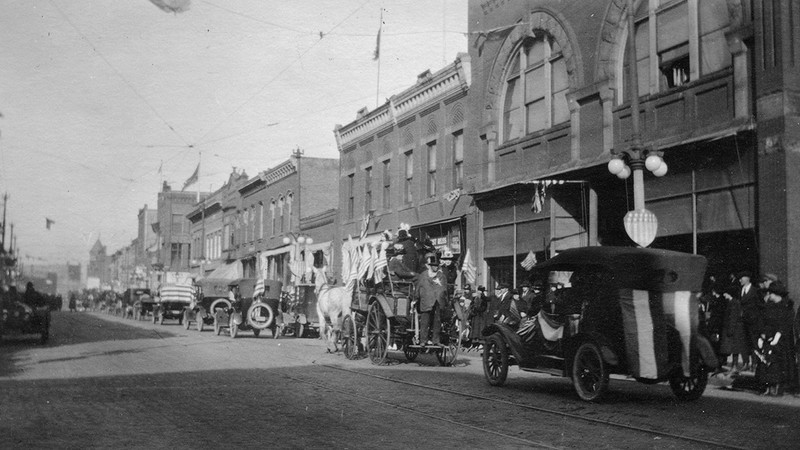
South Barstow Street looking north; turret of Drummond-Laycock building visible in center, Hotel Eau Claire at right (1925).

Old music hall, corner of Barstow and Kelsey (now Grand); building was destroyed by fire in 1871 (ca. 1867-1871)
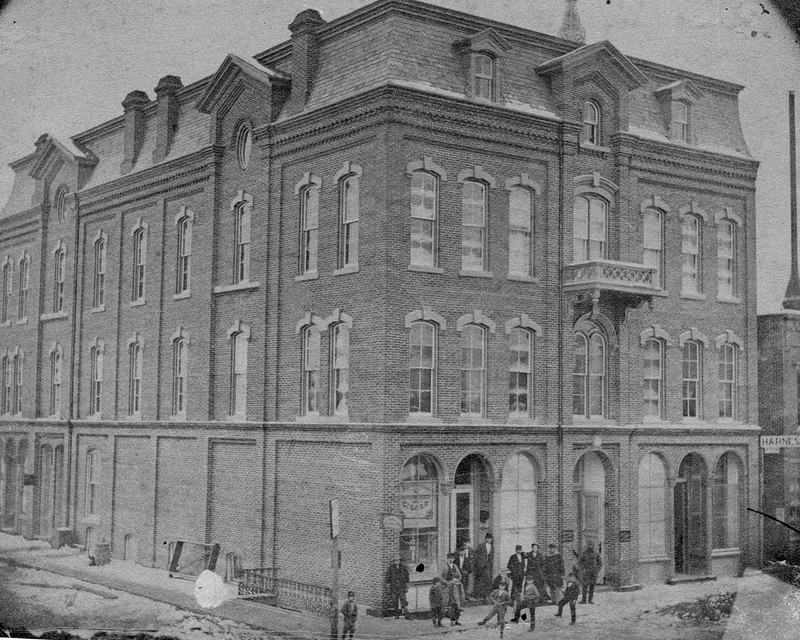
Grand Opera House, 400 block of Barstow Street (1908)
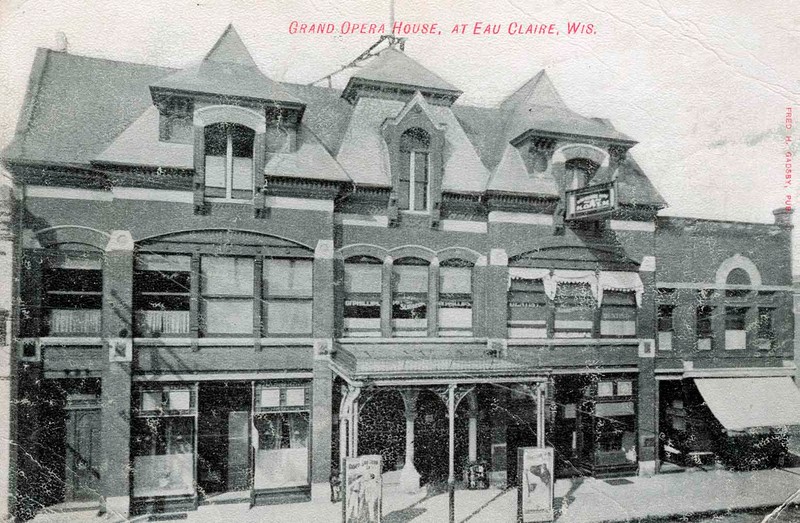
Barstow Street looking north from Main Street (1969)
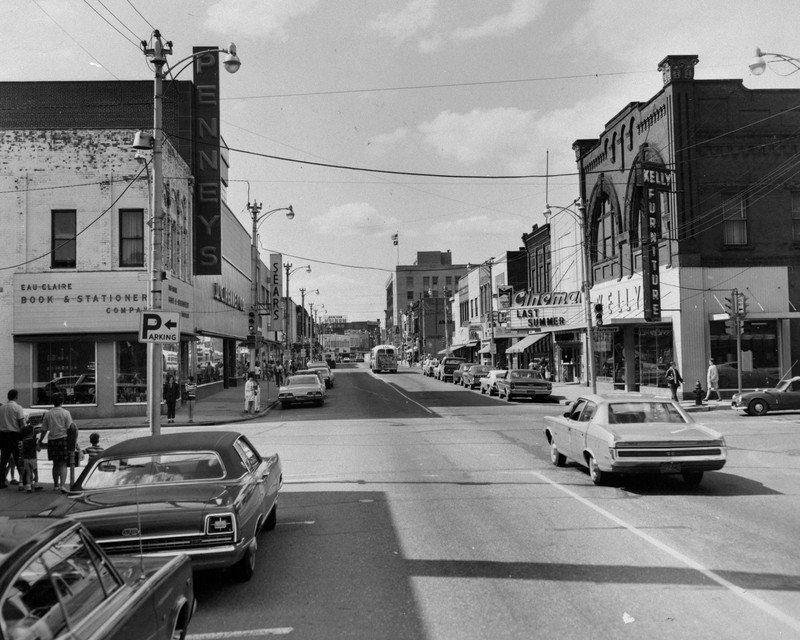
Backstory and Context
Text-to-speech Audio
Barstow Street was named after William A. Barstow. He moved to Wisconsin in 1839, seeking a new start in business after a tumultuous career with his brothers in Connecticut. After becoming Wisconsin's Secretary of State in 1850, he was defeated for reelection in 1851 because of his involvement in several controversies. He served as governor of the State of Wisconsin beginning in 1854. However, after a legal challenge to the legitimacy of his second election in 1855, Barstow was removed from office by the Wisconsin Supreme Court in 1856. Despite his controversial reputation, he continues to be recognized for his role as a general in the Union Army during the Civil War.
The history of the Barstow Street Bridge is complicated and riddled with controversy. The first bridge connecting the north and south segments of the street was completed in 1859, two years after an editorial in the local newspaper asked why it was still under construction. Only a few years after that, residents were dissatisfied with the condition of the bridge, and in 1867 the town voted to fund a replacement. However, there were allegations of ballot tampering, and the process was halted by injunction until a lawsuit was withdrawn. The new bridge was completed in 1868. By November 1871, the Eau Claire Weekly reported that the bridge had already been condemned and a replacement was under construction. This iteration lasted until 1905, when rotted timbers made it unfit for traffic. It was replaced by a concrete arch bridge, causing many residents to worry that the arches would collect debris and obstruct the flow of water during high water events. This fear escalated when a major flood in June 1905 swept away the temporary bridge that accommodated pedestrian traffic. However, the concrete structure was completed in 1906 and lasted 80 years until it was replaced by the current bridge in 1986.
Barstow Street demonstrates the network of the Eau Claire community on a national scale. This single street, with its history as a housing and business district served the local community while its namesake, William Barstow, extended Eau Claire’s influence on a state-scale as governor and to national recognition as a Union Army General. The long and complex history of Eau Claire’s Barstow Street demonstrate the depth of the community’s internal and external influence.
Sources
- Barland, Lois. Sawdust City. Stevens Point, WI. Worzalla Publishing Co., 1960.
- "Business Men Endorse Bridge." Eau Claire Sunday Leader (Eau Claire, Wis.) June 11th 1905. 3.
- "Commenced Work." Eau Claire Weekly Free Press (Eau Claire, Wis.) November 16th 1871. 2.
- Giffey, Tom. 5 Wisconsin Politicians Who Left the Job Early, VolumeOne. September 5th 2019. Accessed July 31st 2020. https://volumeone.org/articles/2019/09/05/14046-5-wisconsin-politicians-who-left-the-job-early.
- Historical Essay: Barstow, William Augustus (1813-1865), Wisconsin Historical Society. Accessed July 31st 2020. https://www.wisconsinhistory.org/Records/Article/CS2079.
- Photograph: Barstow Street in Eau Claire, Wisconsin Historical Society. Accessed July 31st 2020. https://www.wisconsinhistory.org/Records/Image/IM10131.
- Property Record: BARSTOW ST ACROSS THE EAU CLAIRE RIVER, Wisconsin Historical Society. Accessed July 31st 2020. https://www.wisconsinhistory.org/Records/Property/HI40896.
- Thao, Pan. The Marathon of Bridges, Visit Eau Claire. April 18th 2019. Accessed July 31st 2020. https://www.visiteauclaire.com/blog/post/the-marathon-of-bridges/.
Chippewa Valley Museum: 200102-0025
Chippewa Valley Museum: 182000-0139
Chippewa Valley Museum: 182000-0013
Chippewa Valley Museum: 200102-0015
Chippewa Valley Museum: 912600-0101
Chippewa Valley Museum: 200102-0019
Chippewa Valley Museum: 916020-0001
Chippewa Valley Museum: 916010-0005
Chippewa Valley Museum: 200102-0024
